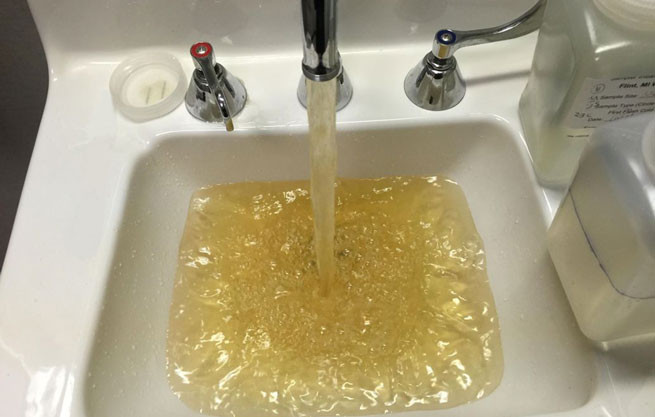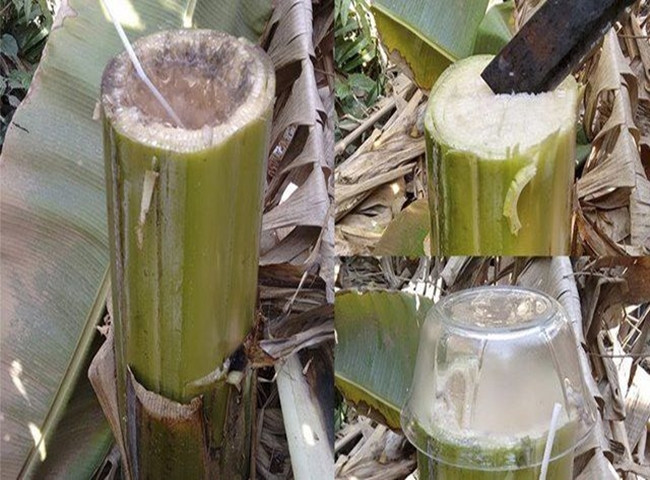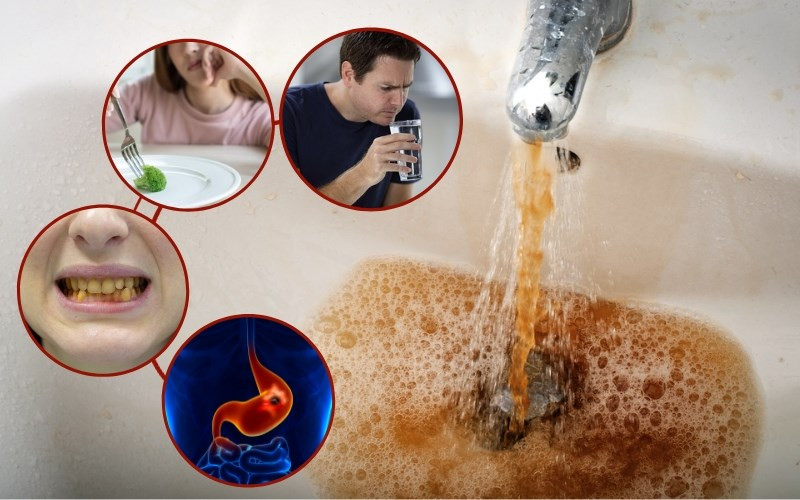Iron-contaminated water is one of the main causes of health and living problems. In this article, we will guide you through 3 ways to identify alum-contaminated water at home, helping you and your family to proactively protect your health
How to identify alum contaminated water by senses

- Water contaminated with alum is light yellow, dark yellow, brown or reddish brown.
- High turbidity, when leaving a quantity of water in a jar for a period of time, you can see sediment settling at the bottom of the jar, usually yellow or brown.
- There is a strange, unpleasant smell, which can vary depending on the level of alum contamination, but is often described as acrid, the smell of wet earth or metal.
- Sour taste, with scum.
One of the effective solutions to treat alum-contaminated water is the RO water filtration system, which uses reverse osmosis technology to remove most impurities, including alum, providing pure water. However, if you need a more economical solution, a water filtration system using sand and activated carbon is also a good choice, helping to remove color and fishy odor. When choosing equipment, you need to consider the quality of the input water, usage needs and affordability to find the most optimal solution. You can find filter materials at the best price at Song Phung so you can process them yourself at home.
Detailed information:
How to identify alum contaminated water using banana sap

The method of using banana sap to test for alum-contaminated water is a traditional, simple but effective method. You need to follow these steps:
- Preparation:
- Green Banana Tree
- Water Cup
- Cutter/ Knife
- How to do it:
-
Step 1: Cut the banana tree, hollow out the trunk to expose the flesh and banana sap.
-
Step 2: Drop a few drops of banana sap into a glass of water suspected to be contaminated with alum.
-
Step 3: Leave it for 3 to 5 minutes and observe the color change in the glass of water.
- Observe the results: If the water turns dark, it means the water is contaminated with alum. The change in color is due to a chemical reaction between banana resin and ions in the alum-contaminated water.
*Note: Although this method is quite simple, you still need to be careful to avoid banana sap coming into contact with your skin or eyes as it can cause irritation.
How to identify alum water with tea water

Using tea water to test for alum-contaminated water is a smart and simple folk method that helps you quickly detect the presence of alum in water without the need for specialized tools.
- Preparations:
- Prepare a cup of strong tea
- Cup of water
- How to do it:
- Step 1: Mix a small amount of tea leaves and boiling water to form a strong tea mixture.
- Step 2: Mix the brewed tea with a quantity of water that you suspect is contaminated with alum.
- Observe the results: After mixing the tea water with the suspected water sample, observe the change in color of the solution. If the solution turns purple, this is a sign that the water contains alum. The darker the color, the higher the concentration of alum in the water.
See now: Instructions for use of Utility Calculator for Chlorine Dosing for Disinfection
The harmful effects of alum contaminated water on health and daily life

Alum contaminated water not only affects the quality of daily life but can also cause many serious health problems.
Health effects
-
Drinking alum-contaminated water can cause digestive problems such as nausea, stomachache, and diarrhea.
-
Alum-contaminated water used for bathing can cause dry, itchy, and easily irritated skin.
-
Long-term exposure to alum-contaminated water can affect the endocrine system, disrupting hormones
Harmful effects on daily life
-
Alum-contaminated water used for laundry can leave yellow or brown stains on clothes, reducing the durability of the fabric.
-
Water with high alum content can damage household appliances that use water such as washing machines, water heaters, and plumbing systems.
-
Using alum-contaminated water for cooking can affect the taste of food, making it less edible and possibly reducing its nutritional value.
Hopefully, the ways to identify alum-contaminated water at home will help you avoid potential health risks and also help improve the quality of your daily life. Apply the simple testing methods that Song Phung has instructed, so that you can quickly and easily determine the quality of the water you are using. Be proactive in checking and taking timely action to ensure the safety of you and your family.


